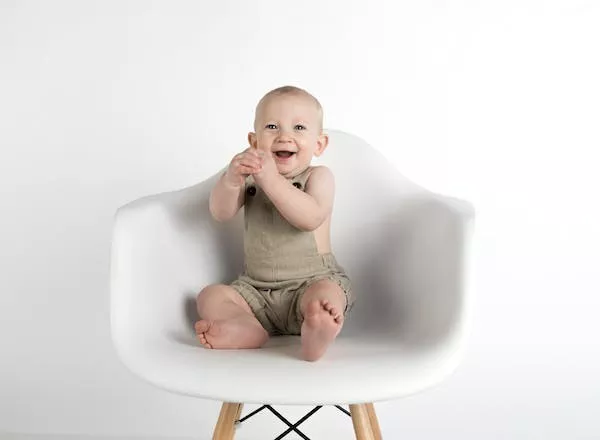As a new parent, there are numerous questions that arise regarding the care of your newborn. One common concern is about bathing routines: How often should you bathe your baby? How much water is appropriate? What products are safe to use? It’s essential to strike the right balance between cleanliness and the delicate nature of a newborn’s skin. In this article, we will address these concerns and provide guidance on establishing a suitable bathing routine for your little one.
The Importance of Baby Bathing
Bathing your newborn serves several purposes beyond basic hygiene. It helps to keep your baby clean, refreshed, and comfortable. Bath time can also be a bonding experience between parent and child, promoting a sense of closeness and security. Moreover, gentle touch and warm water can have a soothing effect on infants, aiding in relaxation and better sleep.
Factors to Consider
Before determining the frequency of your baby’s baths, consider the following factors:
1. Age and Physical Activity: Newborns typically do not require daily baths as their activities are limited, and their exposure to dirt and grime is minimal. Bathing frequency may increase as your baby grows and becomes more active.
2. Climate and Season: The weather conditions and the climate of your region play a role in deciding bathing frequency. In hot and humid climates, more frequent bathing may be necessary to keep your baby cool and comfortable.
3. Skin Sensitivity: Newborns have delicate and sensitive skin that can be prone to dryness, irritation, and rashes. It’s important to choose mild, hypoallergenic products and avoid over-bathing, which can strip away natural oils and disrupt the skin’s protective barrier.
4. Health Conditions: If your baby has certain health conditions, such as diaper rash or eczema, your pediatrician may recommend specific bathing routines or products tailored to their needs.
Determining the Bathing Schedule
Now that we have discussed the factors to consider let’s dive into the bathing schedule for your newborn:
1. The First Few Weeks: During the first few weeks after birth, it is generally recommended to give your baby a sponge bath until the umbilical cord stump falls off and the circumcision (if applicable) has healed. Sponge baths involve using a soft cloth or sponge to clean your baby’s face, neck, hands, and diaper area. This allows you to keep your baby clean without immersing them in water.
2. After the Umbilical Cord Falls Off: Once the umbilical cord stump falls off and the navel area has healed, usually within one to four weeks, you can transition to full baths. At this stage, aim for two to three baths per week. Frequent baths are unnecessary and can dry out your baby’s skin.
3. Bath Frequency Increases: As your baby grows older and becomes more mobile, you can gradually increase the frequency of baths. By the time your baby reaches six months, daily baths or baths every other day are typically suitable. However, keep in mind that every baby is unique, and you should adjust the frequency based on your child’s needs.
Tips for a Safe and Enjoyable Bath Time
To ensure a safe and enjoyable bathing experience for your little one, consider the following tips:
1. Temperature: Maintain a comfortable room temperature between 75°F to 80°F (24°C to 27°C) and ensure the water temperature is around 100°F (38°C). Always check the water with your elbow or a thermometer to avoid scalding your baby.
2. Safety Precautions: Never leave your baby unattended during bath time. Gather all the necessary bathing supplies, such as towels, soap, and clean clothes, before starting the bath. Keep them within reach to minimize the need to step away from your baby.
3. Bathing Products: Choose mild, fragrance-free, and hypoallergenic baby products. Look for cleansers specifically formulated for newborns, as they are gentle and less likely to cause irritation. Avoid using adult soaps or shampoos, as they can be too harsh for your baby’s delicate skin.
4. Handling Techniques: Support your baby’s head and neck with one hand while bathing. Use the other hand to gently wash your baby, ensuring you clean all the folds and creases carefully. Be extra gentle around the diaper area, as it is prone to irritation and diaper rash.
5. Moisturization: After the bath, gently pat your baby dry with a soft towel, paying close attention to the skin folds. Avoid rubbing, as it can cause irritation. Apply a hypoallergenic, fragrance-free moisturizer to help lock in moisture and keep your baby’s skin soft.
Conclusion
Establishing a bathing routine for your newborn requires finding the perfect balance between cleanliness and your baby’s delicate skin. By considering factors such as age, climate, skin sensitivity, and health conditions, you can determine an appropriate bathing schedule. Remember, during the first few weeks, sponge baths are recommended until the umbilical cord stump falls off. As your baby grows, two to three baths per week are generally sufficient. Be cautious of water and room temperature, use gentle baby products, and always prioritize your baby’s safety and comfort during bath time.



